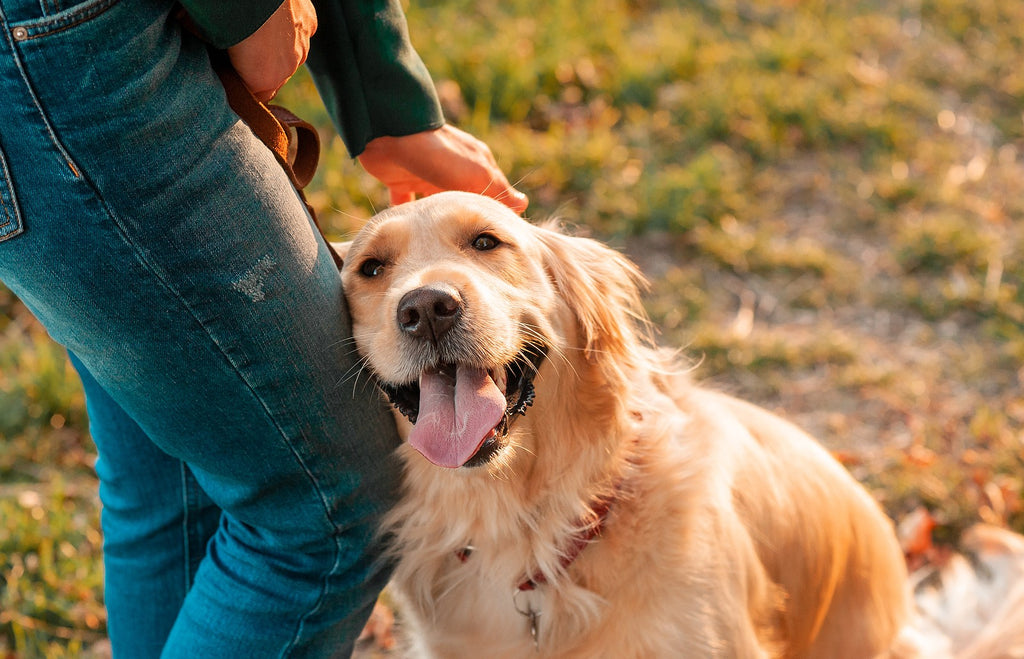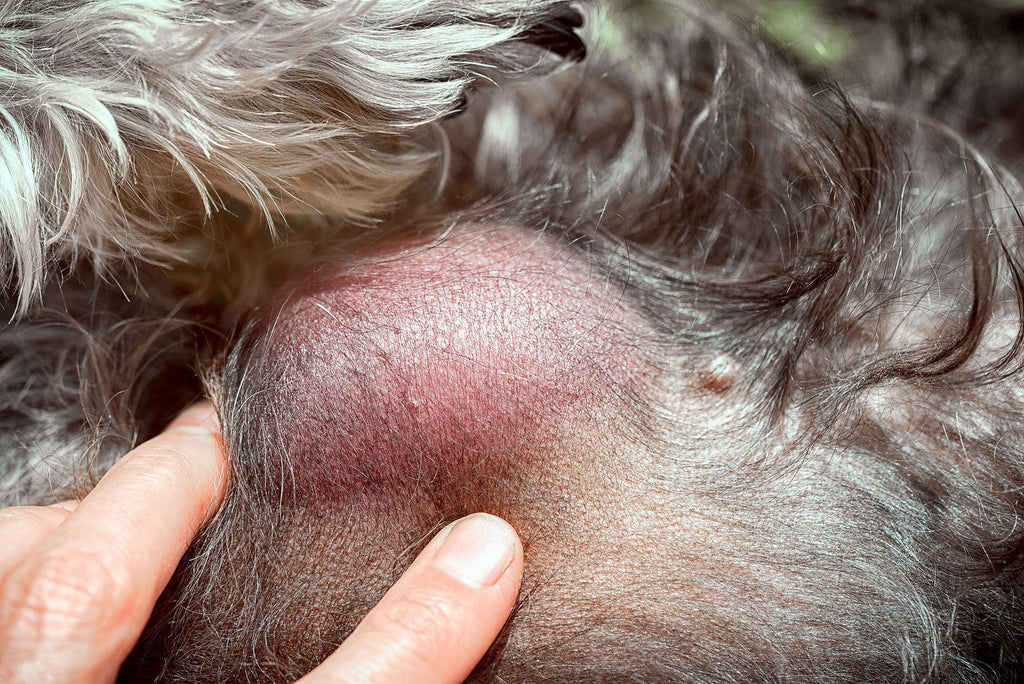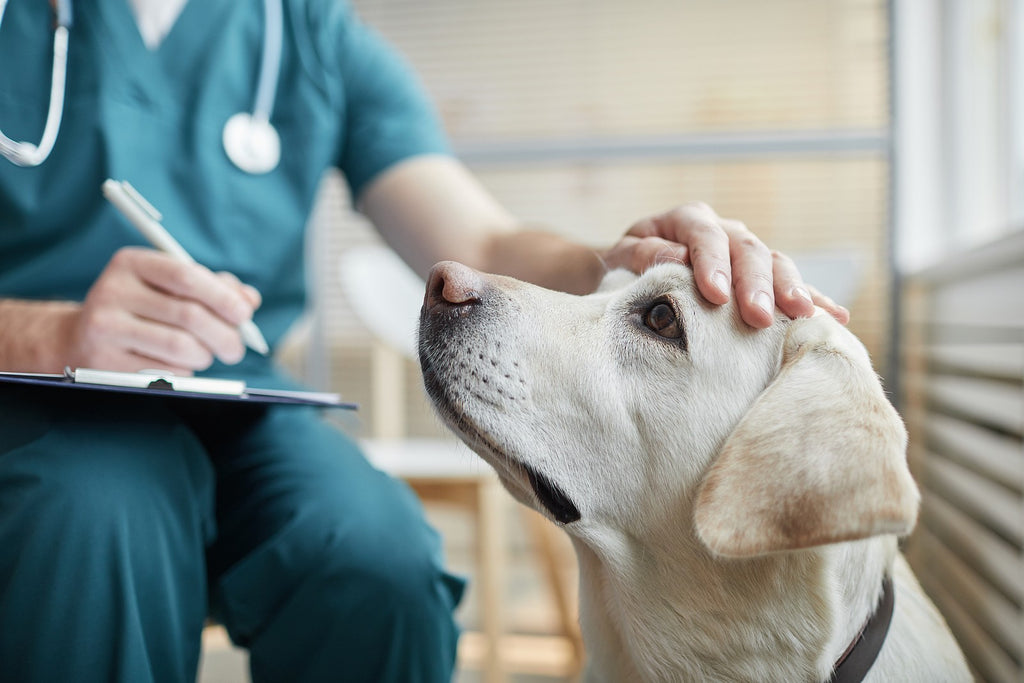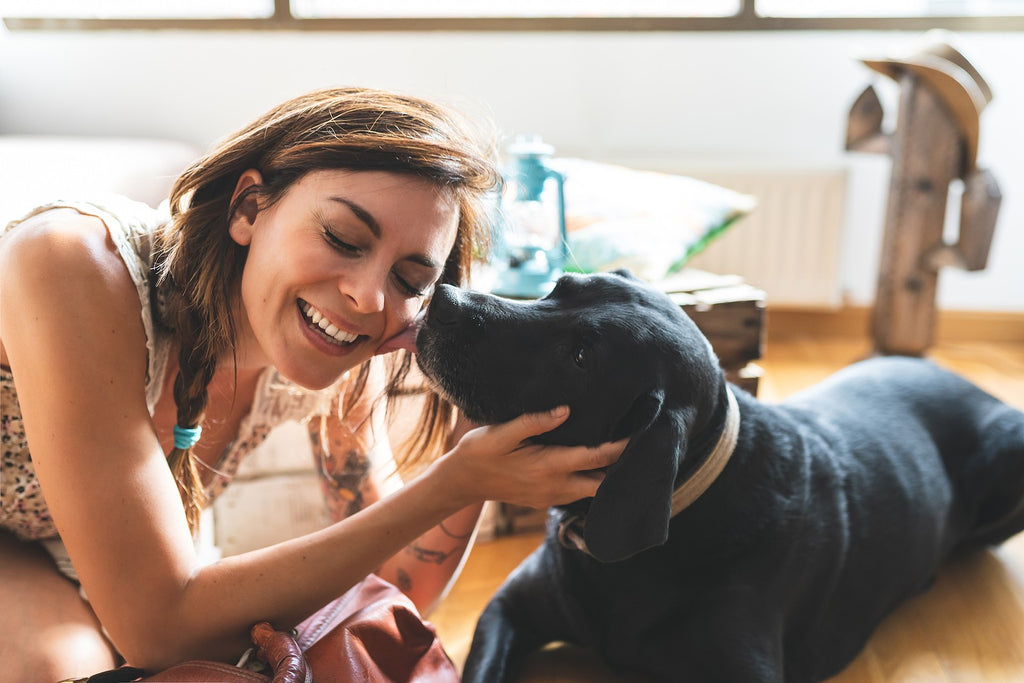A Support Guide to Canine Cancer
 It's a difficult diagnosis, but canine cancer may not always lead to a sudden loss of your best friend. In fact, many dogs live good lives in spite of their cancer diagnosis, and certain treatments can be highly effective. One of the biggest factors in the equation when it comes to quality of life when your dog has cancer is you.
It's a difficult diagnosis, but canine cancer may not always lead to a sudden loss of your best friend. In fact, many dogs live good lives in spite of their cancer diagnosis, and certain treatments can be highly effective. One of the biggest factors in the equation when it comes to quality of life when your dog has cancer is you.
As the person overseeing their care, offering the best food for dogs with cancer, and providing support for your pet, you can make a big difference. The key is knowing what to expect, how to react, and how to support your dog through the challenge. We've pulled together this dog cancer support guide to help you and your dog along the way.
1. The Diagnosis: What You'll Learn and Why It Matters

Cancer is a broad term with a lot of specifics in the details of the diagnosis that make a huge difference. When your dog is initially diagnosed, your vet will explain what type of cancer is suspected, what the prognosis may be, and what types of treatment options may be viable.
Keep in mind, every form of cancer in dogs can vary. For example, bone cancer may have different concerns and treatment recommendations than something like liver cancer. Your vet may make recommendations from your veterinary oncologist of treatment based on a number of factors, such as:
- The age of your dog at diagnosis
- The progression or stage of the cancer
- The risks versus benefits of available treatments
It is important to become familiar with the specific cancers, diagnosis and treatments available so you can make the best choices for your dog going forward.
2. Cancer Treatment: What to Expect

Your veterinary oncologist may recommend a single type of treatment, or they may recommend a combination of treatments to give your dog the best chance of survival. Chemotherapy, radiotherapy, surgery, immunotherapy, cryotherapy, and more may be treatment options recommended for cancer in dogs. Here is a look at the three most common treatment options and what to expect with each.
Chemotherapy
Chemotherapy may be recommended for something like mast cell tumors or lymphoma and can be really effective at generating remission. For example, dogs with lymphoma can experience rapid progression of the disease in just a few months. However, with a combination of chemotherapy drugs like vincristine and doxorubicin, studies have shown that 84 percent of dogs see remission for around nine months. Chemotherapy may involve oral or intravenous medications, but in either case, you can expect frequent vet visits to monitor your dog's progress with treatment.
Radiotherapy
Radiation therapy, often simply referred to as radiotherapy, is most often used in conjunction with other treatments for canine cancer. Dogs generally show fewer side effects from radiation treatment and tolerate it much better than humans due to a number of factors.
Targeted radiation therapy is most effective for localized tumors but may also be used after tumor removal to negate cancer cells in the area that could be remaining. The treatment is given in your veterinarian's office. Side effects are similar for dogs as they are with humans: hair loss, redness, and pain at the treatment site are common side effects. These effects usually show up between one and three weeks after the onset of treatment.
Surgery
Surgery to remove cancerous tissue can sometimes be one of the first treatment plans with localized cancer types like anal sac cancer or breast cancer. While effective at removing cancerous tissue, surgery alone is not always enough. Therefore, some pets may require surgical excision of a tumor, a limb, or tissue and concurrent chemotherapy.
3. Supporting Your Dog's Best Health: Tips to Remember

Whether you opt for formal treatment or choose to simply give your dog the best life in spite of the cancer diagnosis, you can support your dog's health through everyday choices. Lifestyle changes, a good canine cancer diet, and even your love and attention can improve the dog's quality of life.
Diet Plays a Vital Role in Your Dog's Health
Proper nutrition is vital to supporting your dog after a cancer diagnosis, with or without formal treatment. Through treatment, a good nutrition plan can nurture the dog's immune system to encourage healing and help with the fight. Without formal treatment, a good nutrition plan may give your pet the nutrients necessary to maintain vitality, get good vitamins and minerals in every bite, and potentially slow the progression of the illness. The best food for dogs with cancer will offer:
- Nutritional balance with good vitamins and minerals
- Amino acids and antioxidants
- Nutritional potency
- High palatability
In addition, offering supplements for dogs with cancer like salmon oil for dogs or a supplement mix can fill in gaps that your dog may not get with their food.
Exercise is Still Important
Exercise may be beneficial for your dog with cancer because exercise helps support strength, improve blood flow, and make the dog happy. In general, veterinarians do encourage dog owners to continue to encourage exercise, whether that is taking walks, going for car rides to favorite parks, or just playing fetch. Of course, certain types of cancer may make physical activity risky. For instance, if a dog has a tumor that affects the heart or lungs, strenuous activity can mean heightened chances of complications. Discuss exercising your dog with your vet to make sure the usual activities are safe.
Practice Patience and Offer Emotional Support
Certain forms of cancer or cancer treatments can mean your dog will have bad days. Some dogs face challenges with bowel or bladder incontinence, extreme fatigue, lack of appetite, and more. When your dog's not feeling well, they may even get agitated easily and not want much to do with anyone. Be patient during these times - as a pet owner it is important to offer love when your dog is up for it and give them the space needed to rest.
4. The Tough Times: How to React If Your Dog's Quality of Life Is Waning
Even with treatment, the best canine cancer diet, and all the support you can provide, some situations with canine cancer can be or become dire. If you see that your dog's quality of life is seriously waning due to pain, discomfort, or treatment, reach out to your vet for advice. Your vet may recommend palliative care, which involves offering medications to make your dog comfortable without further treatment.
5. Final Thoughts: Dogs Can Live Full Lives with Cancer

About one in four dogs do end up with a cancer diagnosis, and one in two dogs over the age of 10 develops some type of cancer. But cancer doesn't always mean you will lose your pet. Careful care, treatment, and attention for your dog can sometimes mean more years to enjoy their companionship. Work closely with your vet to understand your dog's diagnosis and what treatments may help. Adjust your dog's nutrition and do what you can to keep your pet happy.
If you’re looking for the best food for dogs with cancer, Canine Biologics can help. Our Integrated Nutrition System is specifically formulated for your dog's health and health concerns. With human-grade food, wild-caught salmon oil, and special supplements for dogs derived from plant extracts, our integrated approach supports immune, digestive, and integumentary systems. Try our Nutrition Plan Builder today to find the right plan for your dog.

